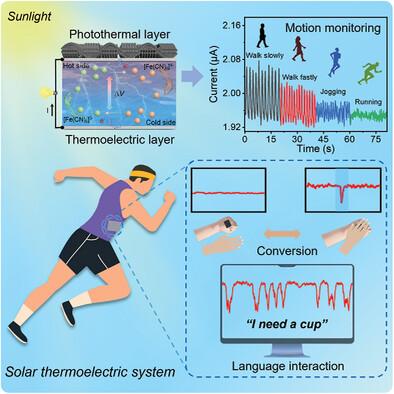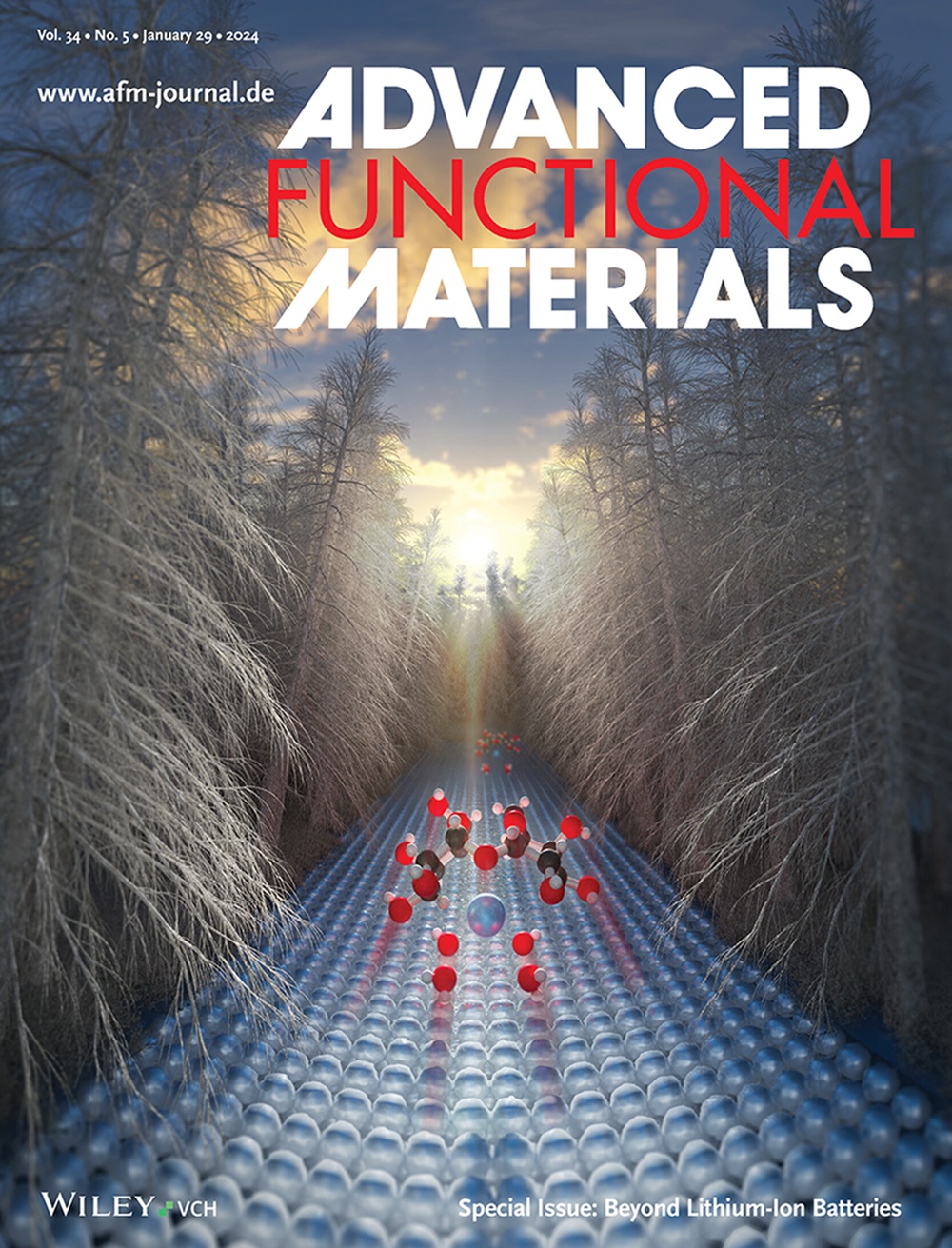Wearable Solar Ionic Thermoelectric Detectors for Human Motion Monitoring and Language Recognition Conversion
IF 18.5
1区 材料科学
Q1 CHEMISTRY, MULTIDISCIPLINARY
引用次数: 0
Abstract
Flexible self-powered sensors with the significant ability to the information perception, decoding, and conveying processes have attracted tremendous attention in healthcare monitoring, motion detection, and intelligent interaction. Also, the solar thermoelectric technology holding the effective solar energy/heat harvesting capacity for sustainable electricity generation shows attractive prospects in self-powered wearable sensing but is terribly limited by its poor flexibility and complex construction. Herein, a solar thermoelectric system, prepared via facilely sandwiching the self-assemble MoS2/Carbon hollow nanoflower-based fabrics with [Fe(CN)6]3-/4− thermoelectric gels, is successfully applied for the self-powered wearable sensing. Owing to the hollow-heterostructure for the strong light absorption, MoS2/Carbon hollow nanoflower-based fabrics demonstrated a photothermal conversion efficiency of 39.6%. The strong heat concentration can supply a considered temperature gradient of 42.7 K for thermoelectric gels with a Seebeck coefficient of 1.08 mV K−1 under a solar intensity of 1 sun, outputting a voltage density of 101.2 V m−2 with a response of 431 ms. Their promising application in self-powered wearable fields, such as noncontact motion monitoring and language interaction is foreseen.

求助全文
约1分钟内获得全文
求助全文
来源期刊

Advanced Functional Materials
工程技术-材料科学:综合
CiteScore
29.50
自引率
4.20%
发文量
2086
审稿时长
2.1 months
期刊介绍:
Firmly established as a top-tier materials science journal, Advanced Functional Materials reports breakthrough research in all aspects of materials science, including nanotechnology, chemistry, physics, and biology every week.
Advanced Functional Materials is known for its rapid and fair peer review, quality content, and high impact, making it the first choice of the international materials science community.
 求助内容:
求助内容: 应助结果提醒方式:
应助结果提醒方式:


